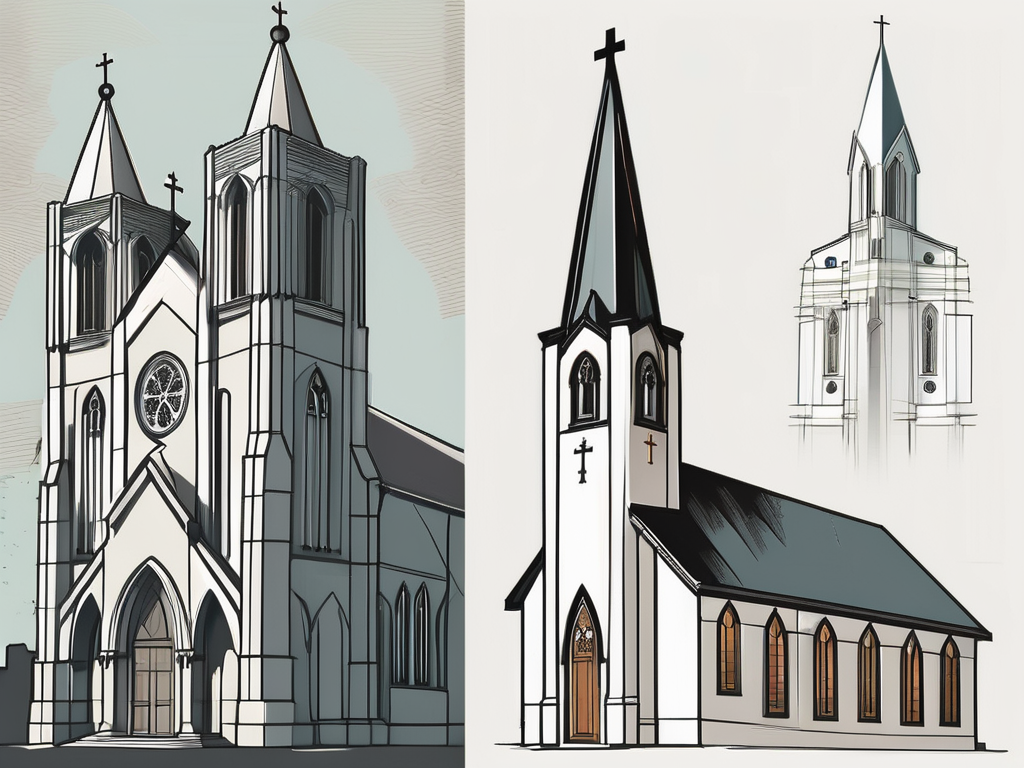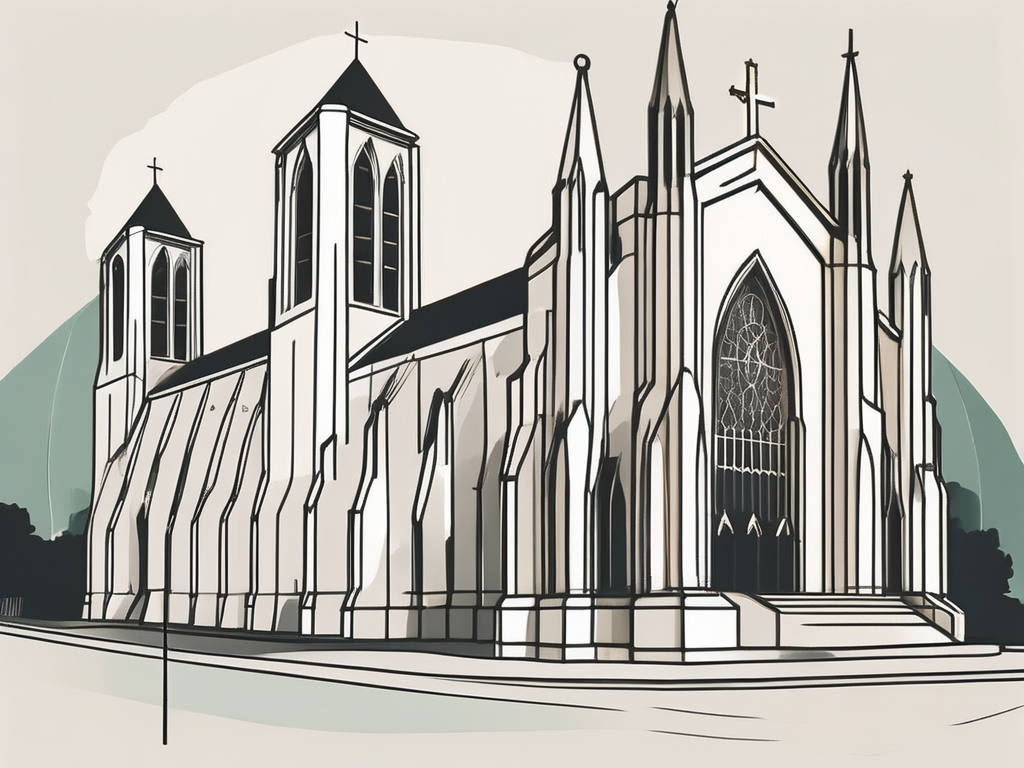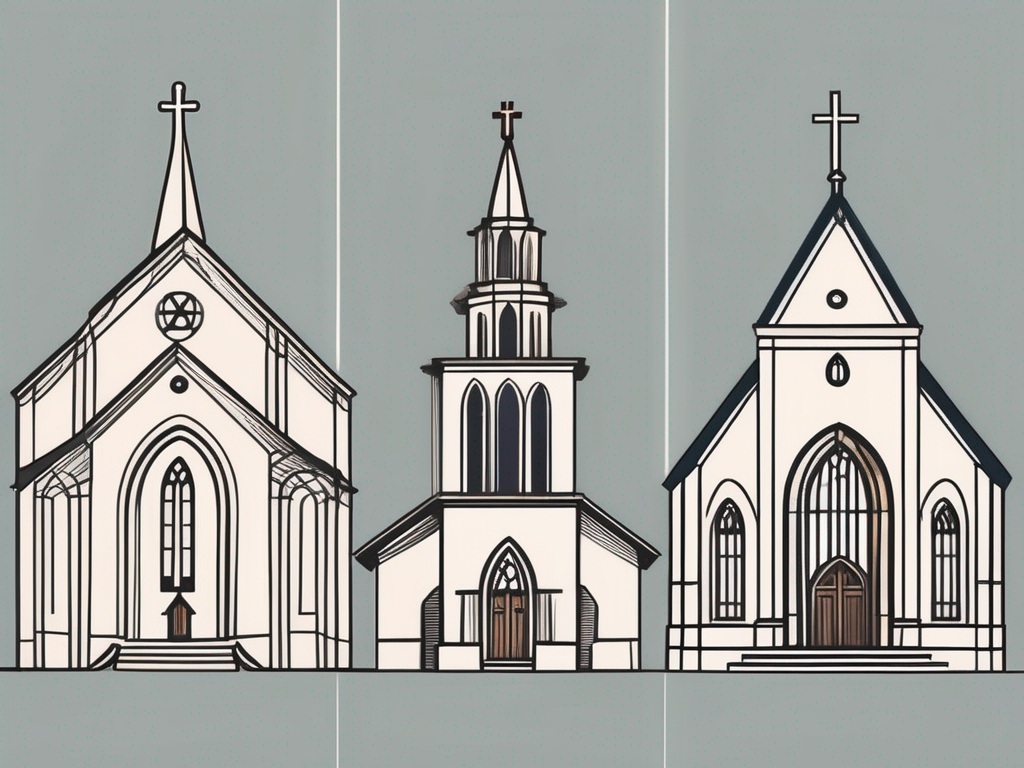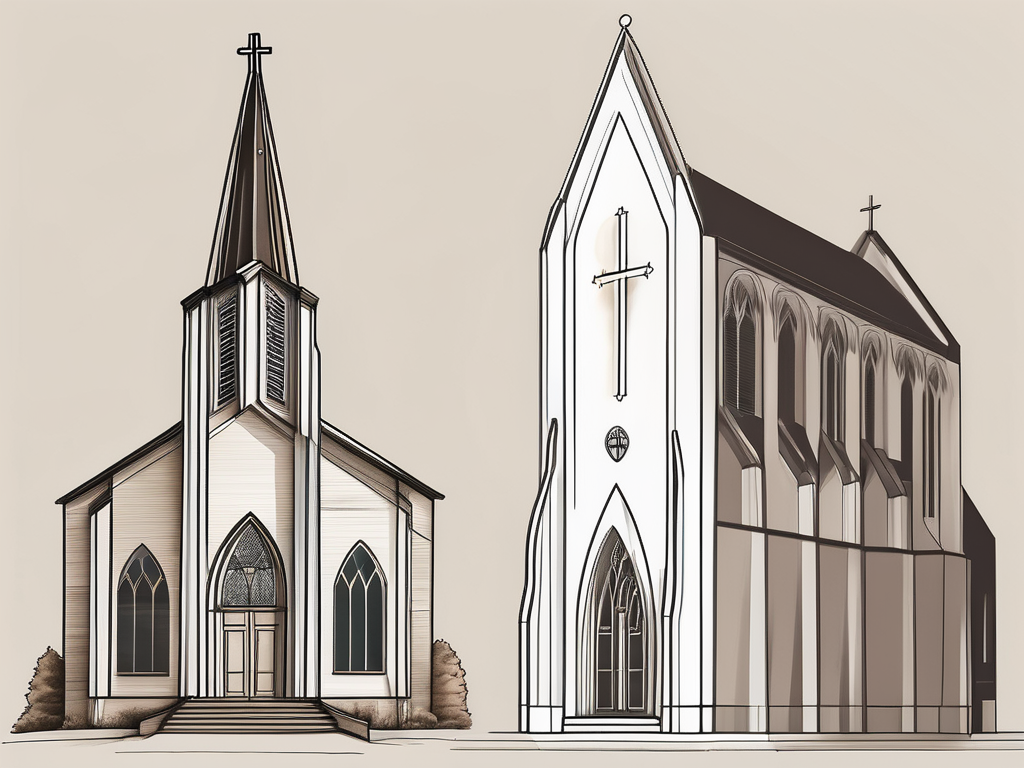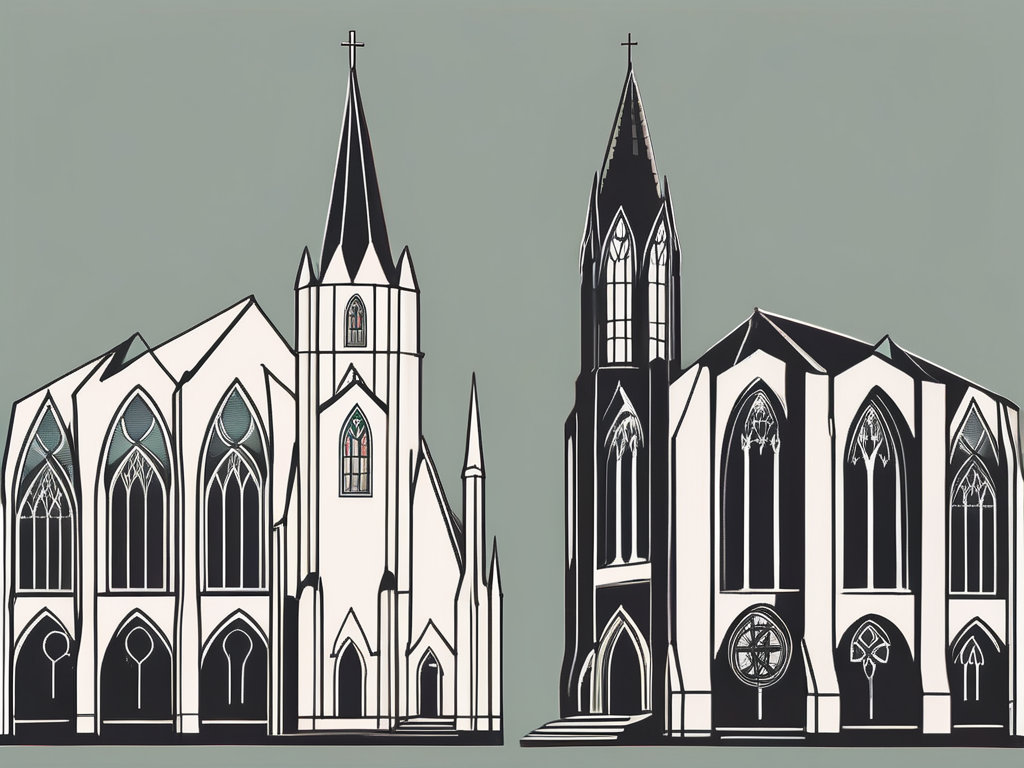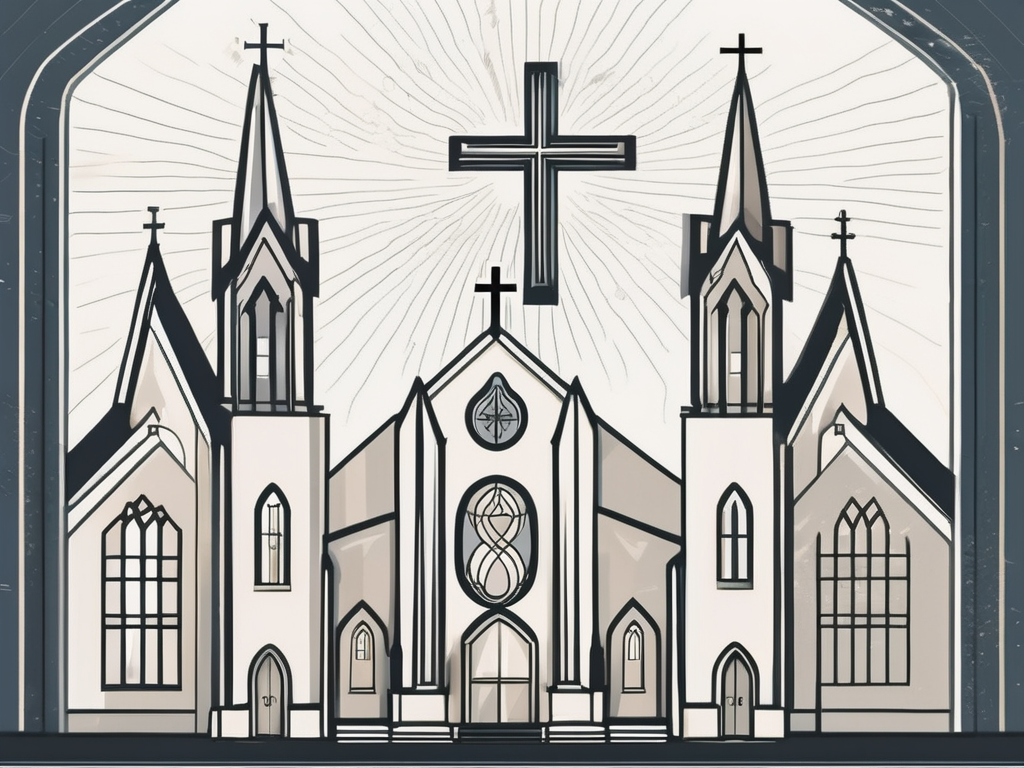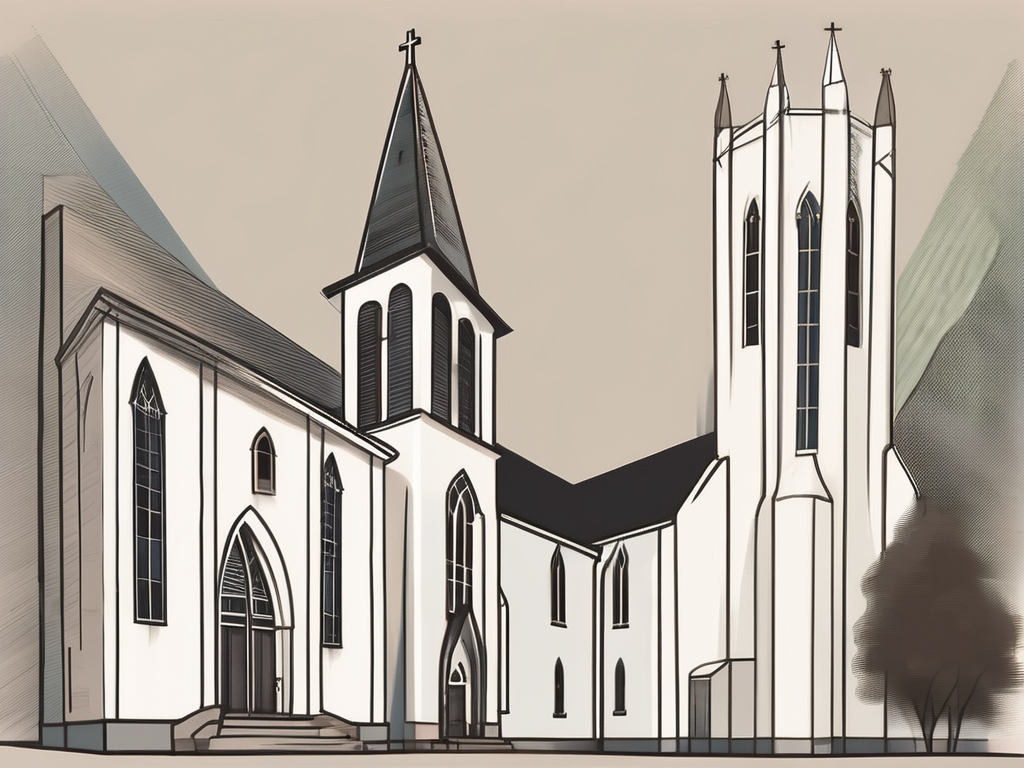In the vast landscape of Christianity, there are numerous denominations that hold different beliefs and practices. Two prominent Protestant denominations that have stood the test of time are the Presbyterian Church and the Anglican Church. While both denominations identify as Protestant, they have unique histories, theological principles, and forms of governance. In this article, we will undertake a comparative analysis of these two denominations to understand their similarities, differences, and what sets them apart.
Understanding Protestantism: A Brief Overview
Before we delve into the distinctive features of the Presbyterian Church and the Anglican Church, it’s essential to grasp the broader context of Protestantism. The Protestant Reformation, which emerged in the early 16th century, was a significant movement that challenged the authority of the Roman Catholic Church. The reformers sought to return to the early teachings of Christianity, emphasizing personal faith and the authority of scripture.
The Birth of Protestantism
The Protestant Reformation was ignited by the efforts of seminal figures such as Martin Luther, John Calvin, and Ulrich Zwingli. Their writings and teachings inspired a widespread movement, resulting in the establishment of new Protestant denominations.
Martin Luther, a German monk and theologian, is often credited as the catalyst for the Reformation. In 1517, he famously nailed his Ninety-Five Theses to the door of the Castle Church in Wittenberg, Germany. These theses were a list of grievances against the Catholic Church, particularly its practice of selling indulgences, which were believed to grant forgiveness of sins.
John Calvin, a French theologian, further developed the ideas of the Reformation. His theological system, known as Calvinism, emphasized the sovereignty of God, predestination, and the importance of living a disciplined and moral life. Calvin’s teachings had a profound impact on the development of Protestantism, particularly in Switzerland and the Netherlands.
Ulrich Zwingli, a Swiss priest, played a crucial role in the Reformation in Switzerland. He advocated for the removal of images and statues from churches, the simplification of religious rituals, and the establishment of a theocratic government. Zwingli’s ideas laid the foundation for the development of the Reformed tradition within Protestantism.
Key Principles of Protestantism
Protestant denominations share several fundamental principles that distinguish them from Catholicism. These principles include the belief in salvation through faith alone, scripture as the ultimate authority, and the priesthood of all believers.
The belief in salvation through faith alone, also known as justification by faith, was a central tenet of the Reformation. Protestants rejected the Catholic Church’s teaching that salvation could be earned through good works and emphasized that it is solely a gift of God’s grace, received by faith in Jesus Christ.
Another key principle of Protestantism is the belief in scripture as the ultimate authority. The reformers emphasized the importance of reading and interpreting the Bible for oneself, rather than relying solely on the teachings of the Church. This led to the translation of the Bible into vernacular languages and the widespread distribution of printed copies.
The priesthood of all believers is a concept that highlights the equality of all believers in Christ. Protestants believe that every Christian has direct access to God and can serve as a minister of the Gospel. This principle challenged the Catholic Church’s hierarchical structure, where only ordained priests had the authority to administer sacraments and preach.
These key principles, along with various theological and ecclesiastical differences, gave rise to a diverse range of Protestant denominations, each with its own distinct beliefs and practices. The Presbyterian Church and the Anglican Church are just two examples of the rich tapestry of Protestantism.
The Presbyterian Church: An In-depth Look
Now let’s turn our attention to the Presbyterian Church, which traces its roots back to John Calvin’s Reformation in Geneva. The Presbyterian Church follows a system of church government called Presbyterianism, which emphasizes the rule of elders. This denomination values a strong connection between the local congregation and regional governing bodies, known as presbyteries and synods.
Origins and History of the Presbyterian Church
The Presbyterian Church originated from the reformed tradition and found a firm footing in Scotland, where it became the established church. Over the years, it spread internationally as Scottish immigrants carried their faith across the globe.
In the 16th century, John Knox played a significant role in shaping the Presbyterian Church in Scotland. Inspired by the teachings of John Calvin, Knox championed the idea of a church governed by elders. He believed in the priesthood of all believers and emphasized the importance of a well-educated clergy.
During the Scottish Reformation, the Presbyterian Church faced numerous challenges and conflicts. It endured periods of persecution and suppression, but its resilience and commitment to its beliefs allowed it to survive and thrive. The church’s influence extended beyond Scotland, with Presbyterianism taking root in countries like Ireland, the United States, Canada, and Australia.
Key Beliefs and Practices of Presbyterians
Presbyterians uphold the essential Protestant beliefs such as salvation through faith, sacraments, and the authority of scripture. They believe in the sovereignty of God and the need for personal conversion. The concept of predestination, which suggests that God has already determined who will be saved, is also a fundamental belief within Presbyterian theology.
Worship plays a central role in the life of a Presbyterian congregation. They gather together to hear the Word of God preached, and the sermon holds great importance. The sacraments of baptism and the Lord’s Supper are celebrated, symbolizing the believer’s union with Christ and the community of faith.
Presbyterians have a rich tradition of congregational singing. Psalms and hymns are sung during worship, reflecting their deep appreciation for music as a form of worship and expression of faith. The Presbyterian hymnal contains a vast collection of hymns that have been cherished for generations.
Structure and Governance in the Presbyterian Church
Presbyterian governance relies on a representative system where elected elders share the responsibility of leading the local congregation. This democratic approach to decision-making and church administration contributes to the sense of community and shared responsibility among members of the congregation.
At the local level, the session, composed of elders and the pastor, is responsible for the spiritual and administrative oversight of the congregation. The session meets regularly to discuss matters related to worship, pastoral care, and the overall well-being of the church community.
Above the session, presbyteries serve as regional governing bodies, consisting of ministers and elders from multiple congregations. Presbyteries provide support, guidance, and accountability to the local congregations within their jurisdiction.
At the highest level, the General Assembly represents the entire denomination and meets annually to discuss and make decisions on matters of doctrine, worship, and social issues. The General Assembly brings together representatives from presbyteries and other church bodies to ensure the unity and direction of the Presbyterian Church as a whole.
Through its structure and governance, the Presbyterian Church strives to maintain a balance between local autonomy and connectionalism. This allows for the sharing of resources, collaboration in mission and ministry, and the preservation of a common faith and identity across the denomination.
The Anglican Church: A Detailed Examination
The Anglican Church has deep historical roots and has evolved from various influences, including the Catholic tradition and the English Reformation. Anglicanism values both scripture and tradition, striking a balance between Catholic and Protestant elements.
When exploring the rich history of the Anglican Church, it is important to understand its formation and evolution. The Anglican Church emerged during a tumultuous time in England’s history when King Henry VIII sought an annulment from his first marriage, leading to a break from the authority of the Roman Catholic Church. This significant event marked the beginning of the Church of England’s journey towards establishing its own distinct identity.
As the Anglican Church continued to develop, it embraced a set of fundamental tenets and rituals that define its theological framework. Being a broad church, Anglicanism encompasses a diverse range of theological perspectives. However, there are common elements that bind Anglicans together. These include the belief in the Holy Trinity, which emphasizes the understanding of God as Father, Son, and Holy Spirit. Additionally, the centrality of the sacraments, such as baptism and Holy Communion, plays a vital role in Anglican worship and spiritual life.
One of the defining features of Anglicanism is the use of the Book of Common Prayer. This book provides a liturgical framework for Anglican worship, guiding both clergy and laity in their collective and individual prayers. The Book of Common Prayer is a cherished tradition within Anglicanism, serving as a unifying force across the Anglican Communion.
When examining the hierarchical organization of the Anglican Church, it becomes evident that it follows an episcopal form of governance. Bishops hold authority over the clergy and are responsible for the overall spiritual and administrative oversight of the church. This hierarchical structure ensures a sense of unity and cohesion across the Anglican Communion, which spans various nations and cultures.
Within the Anglican Church, there are different levels of clergy, each with their own roles and responsibilities. The highest order of clergy is the bishop, who serves as the spiritual leader of a diocese. Bishops are responsible for ordaining priests, consecrating other bishops, and providing pastoral care to their clergy and congregations.
Beneath the bishops are the priests, also known as presbyters. They are ordained ministers who lead worship services, administer sacraments, and provide pastoral care to their congregations. Priests play a crucial role in the day-to-day spiritual life of Anglican communities.
Deacons, another level of clergy, are ordained ministers who focus on serving the community and carrying out acts of charity. They often assist priests in their duties and play an important role in connecting the church with the wider society.
While the Anglican Church has a hierarchical structure, it also values the input and participation of the laity. Laypeople, who are not ordained clergy, play an active role in the life of the church, serving on committees, participating in worship, and contributing to the overall mission and ministry of the Anglican Church.
As we delve deeper into the Anglican Church, it becomes evident that its history, beliefs, and organizational structure are rich and complex. The Anglican Church continues to evolve and adapt to the changing times while remaining rooted in its historical traditions and theological foundations.
Comparing Presbyterian and Anglican Beliefs
While both the Presbyterian Church and the Anglican Church are rooted in the Reformation and share many theological perspectives, there are notable differences in interpretation and practice.
The Presbyterian Church, also known as the Reformed tradition, traces its origins back to John Calvin and the Swiss Reformation. It emphasizes the sovereignty of God in all aspects of life, including salvation. Presbyterians believe in the doctrine of predestination, which asserts that God has predetermined who will be saved and who will not. This belief is based on the idea that God’s grace is irresistible and that humans have no control over their own salvation.
On the other hand, the Anglican Church, also known as the Episcopal Church in the United States, has a more inclusive approach to salvation. Anglicans believe in the importance of human choice and free will in accepting God’s grace. While they acknowledge the sovereignty of God, they also emphasize the role of human agency in the process of salvation. This understanding allows for a more diverse range of theological perspectives within the Anglican Communion.
Similarities in Doctrine and Theology
Despite these differences, Presbyterians and Anglicans share many core beliefs. Both denominations assert the belief in salvation through faith, recognizing that it is only through a personal relationship with Jesus Christ that individuals can be saved. They also affirm the trinitarian nature of God, acknowledging the Father, Son, and Holy Spirit as three distinct persons in one divine being.
Furthermore, both Presbyterians and Anglicans uphold the authority of scripture as the ultimate guide for faith and practice. They believe that the Bible is the inspired word of God and that it contains all necessary teachings for salvation and Christian living. Both denominations also celebrate sacraments as means of grace, although the understanding of these sacraments may differ in certain aspects.
Differences in Interpretation and Practice
One key distinction between Presbyterians and Anglicans lies in the understanding of predestination and free will. While Presbyterians emphasize the sovereignty of God in salvation, Anglicans tend to affirm a more inclusive approach that allows for a degree of human choice. This difference in interpretation can shape their understanding of God’s grace and the role of human agency in the process of salvation.
Moreover, the styles of worship and liturgy may diverge between the two denominations, reflecting their historical and cultural backgrounds. Presbyterians often have a more simplified and structured worship service, focusing on the preaching of the Word and the administration of the sacraments. Anglicans, on the other hand, have a rich liturgical tradition that incorporates formal prayers, hymns, and rituals. This diversity in worship practices adds to the richness and variety within the broader Christian tradition.
In conclusion, while Presbyterians and Anglicans share many theological perspectives, there are significant differences in interpretation and practice. These differences contribute to the diversity and richness of the Christian faith, allowing individuals to find spiritual homes that resonate with their beliefs and preferences.
Governance: Presbyterian vs Anglican
The structures of governance in the Presbyterian Church and the Anglican Church also display contrasting characteristics.
The Role of Clergy in Both Churches
In the Presbyterian Church, ministers share authority within a congregational setting, highlighting the importance of the priesthood of all believers. Anglican clergy, on the other hand, are part of a hierarchical system, with bishops retaining the ultimate authority within their respective regions.
Church Hierarchy and Decision Making
In terms of decision-making processes, Presbyterians follow a representative model, enabling the active participation of lay leaders in major decisions. In contrast, Anglican decision-making involves a more centralized approach, with bishops and synods influencing matters of doctrine and practice.
In conclusion, the Presbyterian Church and the Anglican Church, although both Protestant, exhibit distinct characteristics in their history, beliefs, and governance. Understanding these differences allows us to appreciate the richness and diversity within Christianity. Regardless of denominational affiliation, it is crucial to foster mutual respect and engage in dialogue, recognizing that unity can coexist amidst diversity.
